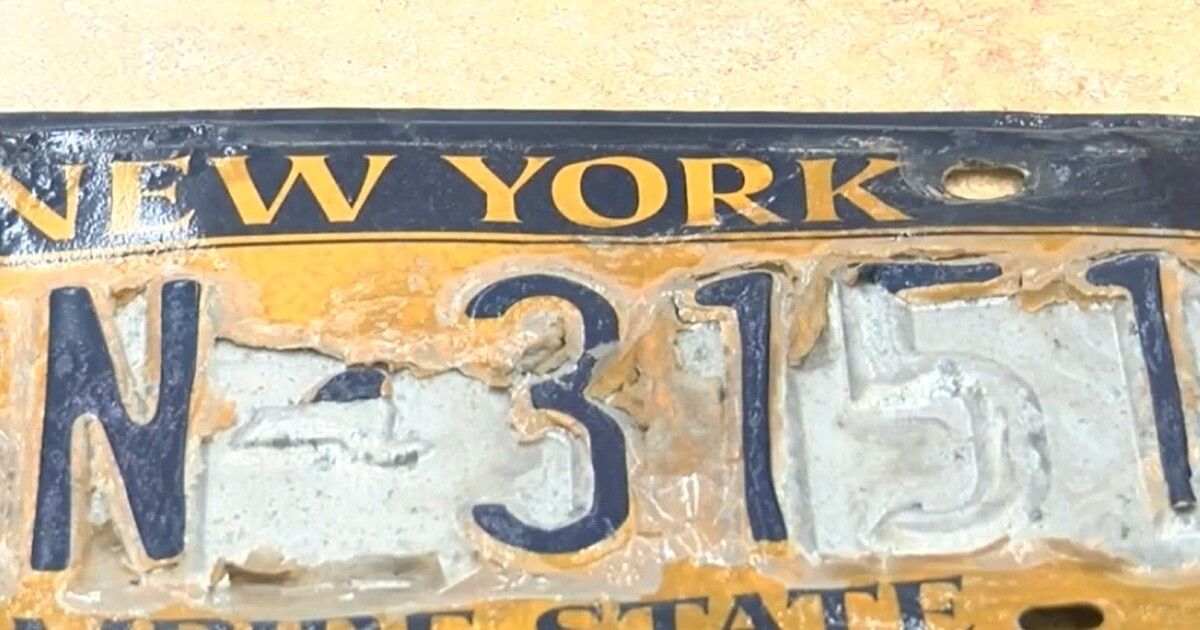Destroying license plates involves making them unreadable or unusable. This can be done by bending, cutting, or smashing them. Additionally, one can also scratch or deface the numbers and letters on the plate. Finally, disposing of the damaged plates properly ensures they cannot be reused.
Looking to dispose of your old license plates securely. Learn how to destroy license plates effectively with simple methods you can do at home. Destroy License Plates? Take control of your privacy and safety today by following these steps to render your license plates unusable and ensure they’re properly disposed of. Don’t risk identity theft or misuse of your plates—destroy them now.
Destroying license plates involves rendering them unreadable or unusable to prevent misuse or identity theft. This can be done by bending, cutting, scratching, or defacing the numbers and letters on the plate, followed by proper disposal.
Understanding the Importance of Properly Destroying License Plates
Understanding the importance of properly destroying license plates is crucial for safeguarding personal information and preventing identity theft. License plates are a vital component of vehicle identification, containing sensitive data such as vehicle registration numbers.
Properly destroying license plates, such as bending, cutting, or punching holes to render them unreadable and unusable, is crucial for safeguarding personal information and preventing identity theft, especially when considering sensitive details like the “Pm On A License Plate.” Furthermore, certain jurisdictions mandate the return of plates to the Department of Motor Vehicles for destruction, ensuring compliance with legal requirements and enhancing overall public safety. By adhering to these protocols, individuals can play a pivotal role in protecting themselves and their communities from potential risks associated with identity theft.
Methods for Destruction
Methods for the destruction of license plates vary but are designed to ensure that sensitive information contained on the plates cannot be misused. Commonly employed methods include bending, cutting, or punching holes through the plates to render them unreadable and unusable. Bending the plates ensures that the numbers and letters are distorted beyond recognition, while cutting or punching holes through them effectively destroys their integrity.
Some jurisdictions may have specific guidelines or requirements for the destruction of license plates, such as returning them to the Department of Motor Vehicles for proper disposal. Following these guidelines helps ensure that plates are destroyed in a manner that meets legal standards and contributes to public safety.
Physical Destruction Techniques
Physical destruction techniques are essential for ensuring the secure disposal of license plates and safeguarding personal information. These techniques typically involve methods such as bending, cutting, or punching holes through the plates to render them unreadable and unusable. Bending the plates distorts the numbers and letters, making them unrecognizable, while cutting or punching holes effectively destroys their integrity, preventing any potential misuse.
Chemical Destruction Options
Chemical destruction options provide an alternative means to securely dispose of license plates and protect personal information from potential misuse. These methods typically involve the use of corrosive substances or chemical solutions to break down the material of the plates, rendering them unreadable and unusable.
Moreover, individuals should exercise caution and follow safety guidelines when using chemical destruction methods to ensure proper handling and disposal of the substances involved. It is essential to choose chemicals that are safe for both the environment and personal health and to dispose of them responsibly according to local regulations.
DIY Destruction: Step-by-Step Guide
A do-it-yourself (DIY) destruction method offers individuals a practical approach to securely dispose of license plates and safeguard personal information. This step-by-step guide typically involves simple techniques such as bending, cutting, or punching holes through the plates to render them unreadable and unusable. First, individuals can use basic tools like scissors, pliers, or a hammer to bend the plates, distorting the numbers and letters beyond recognition.
It’s important for individuals to handle the DIY destruction process carefully and responsibly. Ensuring that the plates are thoroughly destroyed and no readable information remains is paramount. Additionally, individuals should consider local regulations and guidelines regarding the disposal of license plates to ensure compliance with legal requirements.
Gather Necessary Tools and Materials
Gathering necessary tools and materials is the initial step in effectively executing the destruction of license plates. This process typically involves acquiring basic tools such as scissors, pliers, a hammer, or a drill, depending on the chosen destruction method. Additionally, individuals may need protective gear such as gloves and safety glasses to ensure safe handling of the plates and tools.
Choose Your Destruction Method
Choosing the most suitable destruction method is a crucial decision in securely disposing of license plates and protecting personal information. There are various methods available, including physical destruction techniques like bending, cutting, or punching holes through the plates, as well as chemical destruction options using corrosive substances to break down the material.
Considerations for Legal Compliance

Considering legal compliance is essential when disposing of license plates to ensure adherence to local regulations and prevent any potential legal issues. Individuals should familiarize themselves with relevant laws and guidelines established by local authorities regarding the destruction and disposal of license plates.
Moreover, individuals should also consider the environmental impact of their chosen destruction method and strive to minimize harm to the ecosystem. This may involve using eco-friendly materials or disposing of any hazardous substances properly.
Familiarizing Yourself with Local Regulations
Familiarizing yourself with local regulations regarding the disposal of license plates is crucial to ensure compliance with the law and avoid potential legal repercussions. Different jurisdictions may have specific rules and guidelines governing how license plates should be disposed of, including requirements for destruction methods or procedures for returning plates to the Department of Motor Vehicles.
Importance of Secure Disposal
The importance of secure disposal of license plates cannot be overstated, as it directly impacts personal privacy and security. License plates contain sensitive information such as vehicle registration numbers, which, if fallen into the wrong hands, could lead to identity theft or other fraudulent activities.
Furthermore, secure disposal practices also have broader implications for environmental conservation and public safety. Improperly discarded license plates can pose hazards such as littering or potential injuries from sharp edges. By employing secure disposal methods, individuals reduce the risk of environmental pollution and create safer surroundings for their communities.
FAQ’S
Can I simply throw away old license plates?
It’s best to destroy them to prevent misuse.
How can I effectively destroy license plates?
Use heavy-duty tools like scissors or a hammer to render them unusable.
Can I recycle license plates?
Yes, but ensure they’re thoroughly destroyed before recycling to protect personal information.
What’s the safest way to dispose of license plates?
Cutting them into small pieces or bending them significantly reduces their usability.
Are there legal considerations when destroying license plates?
Check local regulations, but generally, destroying them responsibly is advised to prevent misuse.
Conclusion
In conclusion, destroying license plates is a straightforward process that ensures privacy and security. By using tools like scissors, hammers, or a blowtorch, you can render them unusable and prevent potential misuse. It’s essential to take this step seriously to protect personal information and comply with local regulations.
Remember, once destroyed, ensure proper disposal or recycling to minimize environmental impact. By following these steps, you can confidently retire old license plates and safeguard your identity.

I’m Shoaib, a passionate blogger with 5 years of experience. I love writing about tech. My goal is to share useful information and insights with you. Explore my website to discover exciting content on various topics!




